YVH1 / YIR026C Overview
- Standard Name
- YVH1 1 2
- Systematic Name
- YIR026C
- SGD ID
- SGD:S000001465
- Feature Type
- ORF , Verified
- Description
- Dual specificity protein phosphatase; regulates growth, sporulation, and glycogen accumulation in a cAMP-dependent protein kinase cascade dependent manner; mutants are defective in 60S ribosome assembly; positively regulates pre-autophagosomal structure (PAS) formation upon nitrogen starvation or rapamycin treatment 2 3 4 5 6
- Name Description
- Yeast vaccinia virus VH1 Homolog 2
- Comparative Info
-
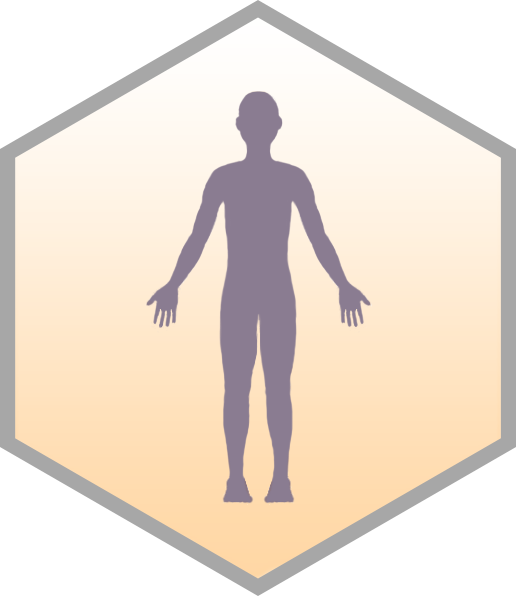
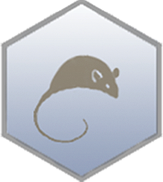
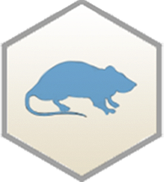

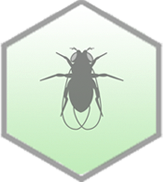

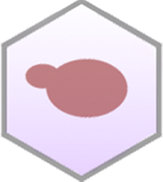
Sequence
The S. cerevisiae Reference Genome sequence is derived from laboratory strain S288C. Download DNA or protein sequence, view genomic context and coordinates. Click "Sequence Details" to view all sequence information for this locus, including that for other strains.
- Summary
- YVH1/YIR026C is located on the right arm of chromosome IX, coding sequence is 1095 nucleotides long with 3 nonsynonymous SNPs
Analyze Sequence
S288C only
BLASTN | BLASTP | Design Primers | Restriction Fragment Map | Restriction Fragment Sizes | Six-Frame Translation
S288C vs. other species
BLASTN vs. fungi | BLASTP at NCBI | BLASTP vs. fungi
S288C vs. other strains
Protein
Basic sequence-derived (length, molecular weight, isoelectric point) and experimentally-determined (median abundance, median absolute deviation) protein information. Click "Protein Details" for further information about the protein such as half-life, abundance, domains, domains shared with other proteins, protein sequence retrieval for various strains, physico-chemical properties, protein modification sites, and external identifiers for the protein.
- Length (a.a.)
- 364
- Mol. Weight (Da)
- 41188.6
- Isoelectric Point
- 8.15
- Median Abundance (molecules/cell)
- 4228 +/- 1275
- Half-life (hr)
- 8.5
Alleles
Curated mutant alleles for the specified gene, listed alphabetically. Click on the allele name to open the allele page. Click "SGD search" to view all alleles in search results.
View all YVH1 alleles in SGD search
Gene Ontology
GO Annotations consist of four mandatory components: a gene product, a term from one of the three Gene Ontology (GO) controlled vocabularies (Molecular Function, Biological Process, and Cellular Component), a reference, and an evidence code. SGD has manually curated and high-throughput GO Annotations, both derived from the literature, as well as computational, or predicted, annotations. Click "Gene Ontology Details" to view all GO information and evidence for this locus as well as biological processes it shares with other genes.
- Summary
- Protein tyrosine/serine/threonine phosphatase involved in cAMP-mediated signaling, ribosomal large subunit assembly, spore wall assembly, and meiotic nuclear division; positively regulates pre-autophagosomal structure (PAS) formation upon nitrogen starvation and rapamycin treatment
View computational annotations
Molecular Function
- Manually Curated
- enables preribosome binding (IDA)
- enables protein tyrosine phosphatase activity (IDA)
- enables protein tyrosine/serine/threonine phosphatase activity (ISA)
Biological Process
- Manually Curated
- involved in ascospore wall assembly (IMP, IGI)
- involved in cellular response to nitrogen starvation (IMP)
- involved in meiotic cell cycle (IMP)
- involved in positive regulation of autophagosome assembly (IMP)
- involved in ribosomal large subunit assembly (IMP, IGI)
- involved in ribosomal large subunit export from nucleus (IMP, IGI)
Phenotype
Phenotype annotations for a gene are curated single mutant phenotypes that require an observable (e.g., "cell shape"), a qualifier (e.g., "abnormal"), a mutant type (e.g., null), strain background, and a reference. In addition, annotations are classified as classical genetics or high-throughput (e.g., large scale survey, systematic mutation set). Whenever possible, allele information and additional details are provided. Click "Phenotype Details" to view all phenotype annotations and evidence for this locus as well as phenotypes it shares with other genes.
- Summary
- Non-essential gene in reference strain S288C; null mutants grow slowly, have small cell size, decreased competitive fitness, increased replicative lifespan, and exhibit defects in rRNA processing, glycogen accumulation, endocytosis, and protein localization; null mutatns are also sensitive to cold, acetolactate synthase inhibitor sulfometuron methyl, antioxidant spermine, antimicrobial hygromycin B, and radical scavenger dimethyl sulfoxide; homozygous diploid null mutants are resistant to zymocin and to zinc deficiency, but sensitive to TOR inhibitor rapamycin, reducing agent 1,4-dithiothreitol, antimicrobial doxorubicin, and carcinogen benzo[a]pyrene; homozygous diploid nulls are also impaired in cell cycle progression, meiosis, sporulation, and fermentative growth, but have increased lifespan; overexpression slows growth
Classical Genetics
- null
- chemical compound accumulation: decreased
- chemical compound accumulation: increased
- cold sensitivity: increased
- growth in exponential phase: decreased rate
- meiosis: decreased
- meiosis: delayed
- protein/peptide accumulation: decreased
- protein/peptide accumulation: normal
- protein/peptide distribution: abnormal
- replicative lifespan: increased
- RNA accumulation: decreased
- RNA accumulation: delayed
- RNA accumulation: increased
- spore wall formation: abnormal
- sporulation efficiency: decreased
- sporulation: delayed
- viable
- null
- acid pH resistance: decreased
- cell cycle progression in G1 phase: increased duration
- cell size: decreased
- chemical compound accumulation: decreased
- chromosome/plasmid maintenance: decreased
- chronological lifespan: increased
- competitive fitness: decreased
- endocytosis: decreased
- fermentative growth: decreased rate
- heat sensitivity: decreased
- heat sensitivity: increased
- hyperosmotic stress resistance: decreased
- innate thermotolerance: increased
- resistance to chemicals: decreased
- resistance to chemicals: increased
- respiratory growth: decreased
- sporulation: decreased
- stress resistance: decreased
- stress resistance: increased
- toxin resistance: increased
- vegetative growth: decreased rate
- viable
- overexpression
- unspecified
Large-scale Survey
Interaction
Interaction annotations are curated by BioGRID and include physical or genetic interactions observed between at least two genes. An interaction annotation is composed of the interaction type, name of the interactor, assay type (e.g., Two-Hybrid), annotation type (e.g., manual or high-throughput), and a reference, as well as other experimental details. Click "Interaction Details" to view all interaction annotations and evidence for this locus, including an interaction visualization.
183 total interactions for 134 unique genes
Physical Interactions
- Affinity Capture-MS: 40
- Affinity Capture-RNA: 3
- Affinity Capture-Western: 28
- Co-fractionation: 1
- Co-purification: 3
- PCA: 10
- Reconstituted Complex: 2
- Two-hybrid: 1
Genetic Interactions
- Dosage Lethality: 2
- Dosage Rescue: 9
- Negative Genetic: 58
- Phenotypic Enhancement: 4
- Phenotypic Suppression: 1
- Positive Genetic: 10
- Synthetic Growth Defect: 7
- Synthetic Lethality: 1
- Synthetic Rescue: 3
Regulation
The number of putative Regulators (genes that regulate it) and Targets (genes it regulates) for the given locus, based on experimental evidence. This evidence includes data generated through high-throughput techniques. Click "Regulation Details" to view all regulation annotations, shared GO enrichment among regulation Targets, and a regulator/target diagram for the locus.
- Regulators
- 4
- Targets
- 0
Expression
Expression data are derived from records contained in the Gene Expression Omnibus (GEO), and are first log2 transformed and normalized. Referenced datasets may contain one or more condition(s), and as a result there may be a greater number of conditions than datasets represented in a single clickable histogram bar. The histogram division at 0.0 separates the down-regulated (green) conditions and datasets from those that are up-regulated (red). Click "Expression Details" to view all expression annotations and details for this locus, including a visualization of genes that share a similar expression pattern.
Summary Paragraph
A summary of the locus, written by SGD Biocurators following a thorough review of the literature. Links to gene names and curated GO terms are included within the Summary Paragraphs.
Last Updated: 2010-03-11
Literature
All manually curated literature for the specified gene, organized into topics according to their relevance to the gene (Primary Literature, Additional Literature, or Review). Click "Literature Details" to view all literature information for this locus, including shared literature between genes.